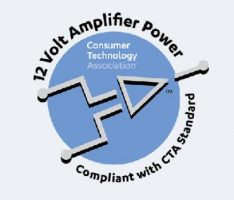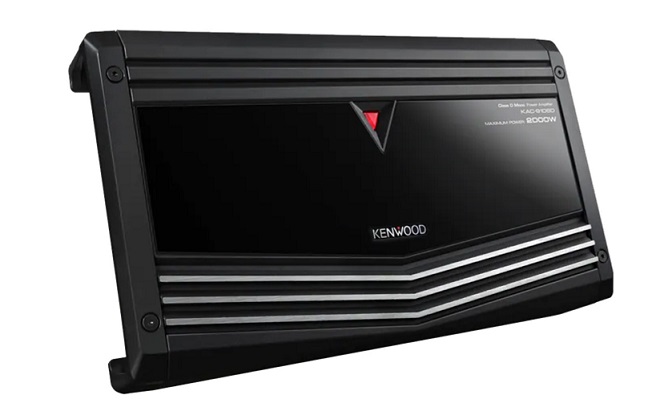A number of amplifiers have been certified under the new Consumer Technology Association (CTA) amplifier power standard that requires amp power ratings be verified by a CTA-authorized third party.
The 2022 standard helps consumers navigate the wide range in claims of watts per channel. A supposed 1,000 watt amplifier may cost $79 from one supplier and $1,000 from another.
New amplifiers that are ANSI/CTA-2006D certified are independently tested and can bear the CTA standard’s logo (below) to assure consumers that the power rating is legitimate.
Suppliers who are offering ANSI/CTA-2006D certified amplifiers include KENWOOD, SONY, JVC and Jensen (Dual Electronics). You can see them listed here.

KENWOOD is offering the widest range of certified amplifiers at 21, Jensen 3, JVC 2 and Sony 2. Sony is also the only supplier listed to have certified a car radio–the model XAV-9000E.
Sony said it has been a long time supporter of the standardization efforts of the CTA. “The measurement standards provide a way for consumers to compare, apples-to-apples, the specifications of a product to determine performance and value for the products they are purchasing,” said Kris Bulla Sony eVehicle Product Training Manager.
He added, ” The costs and effort to support these standards can certainly be impactful, but it is small in terms of Sony providing the best possible environment for their retailers and the consumers.”
The certification process can take a while. Bulla said, “… it is a fairly long process. We must deliver production-ready products to the independent laboratory, they must evaluate and measure them, communication occurs between our company and the laboratory, and once completed the laboratory provides the results to CTA, then CTA must post them to the page. ”
Jensen was first to comply with the CTA 2006 D standard last year with three amplifier models.
The new CTA standard also stipulates a method for determining maximum power ratings. The ratings are measured at a specific distortion level and the supplier then reports the continuous power rating as well as the maximum dynamic power.
The Continuous Power measurement is measured over a period of 15 seconds. (RMS still applies).
Dynamic power is measured using a bursted signal, the timing of which varies with frequency, depending on the type of amplifier being tested (full range or bandwidth limited), according to an independent lab.
Top photo: KENWOOD KAC-9106D










Literally none of those brands interest me in the slightest lol
Check out Williston audio labs on YouTube it’s what he does, day in and day out he tests amps and he’s good at it!
I miss articles that actually bench test car amps.
Check out Williston audio labs on you tube it’s what he does!!!
Yes totally wrong, I bought a audiovox back in 1998 that had the exact same certification sticker
Reading this article I feel like I just traveled back in time.. I can remember this same argument back in the late 1970’s to early 1980’s… 20-20,000K +/- 3 db at 10% distortion.at 14.4 volts when struck by lighting going downhill in a thunderstorm. Funny how history repeats itself.. As stated already, most consumers believe whatever the box says or now a days what ever their favorite social media influencer says. Most of the young generation doesn’t have the critical thinking skills to understand the difference.
It was a great idea in 2006. Still a great idea today, or so we’d think. After so many years, I think it’s safe to say 99.9% of customers don’t know or care about that symbol or the certification. Hence why many big boys no longer participate.
Can’t agree more. This has been going on since the late 90’s…..and it still doesn’t meant a thing to consumers, it’s still something WE have to sell to them, about what certification and meeting these standards are, but that requires the customer seeking us and asking us. In today’s e-commerce economy, most of them are coming to us with what THEY want, based on their own research, and they already have the ability to get most of it without us from online vendors. Creating another “new” stnadard AGAIN, just makes it harder for those select few companies who agree to it to be compliant, but it isn’t really going to make much difference to the end user. “No bro, these a REAL 1000 watts, not just a silk screened number on an amp…” Today’s consumer is not going to care. This might make a small difference to professional/amateur sound competition people, but that’s about it.